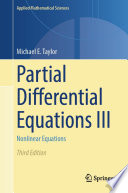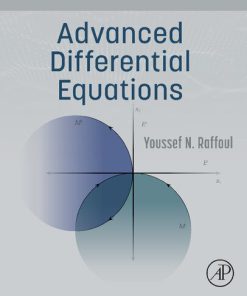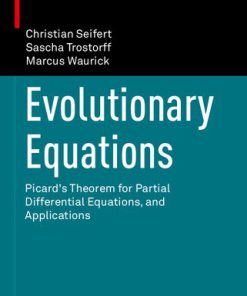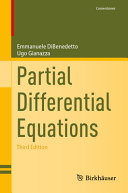p adic Differential Equations 2nd Edition by Kiran Kedlaya ISBN 9781009123341 1009123343
$50.00 Original price was: $50.00.$25.00Current price is: $25.00.
p adic Differential Equations 2nd Edition by Kiran Kedlaya – Ebook PDF Instant Download/Delivery: 9781009123341 ,1009123343
Full download p adic Differential Equations 2nd Edition after payment
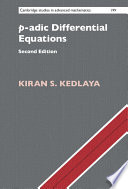
Product details:
ISBN 10: 1009123343
ISBN 13: 9781009123341
Author: Kiran Kedlaya
p adic Differential Equations 2nd Edition Table of contents:
0 Introductory remarks
0.1 Why p-adic differential equations?
0.2 Zeta functions of varieties
0.3 Zeta functions and p-adic differential equations
0.4 A word of caution
Notes
Exercises
Part I Tools of p-adic Analysis
1 Norms on algebraic structures
1.1 Norms on abelian groups
1.2 Valuations and nonarchimedean norms
1.3 Norms on modules
1.4 Examples of nonarchimedean norms
1.5 Spherical completeness
Notes
Exercises
2 Newton polygons
2.1 Newton polygons
2.2 Slope factorizations and a master factorization theorem
2.3 Applications to nonarchimedean field theory
Notes
Exercises
3 Ramification theory
3.1 Defect
3.2 Unramified extensions
3.3 Tamely ramified extensions
3.4 The case of local fields
Notes
Exercises
4 Matrix analysis
4.1 Singular values and eigenvalues (archimedean case)
4.2 Perturbations (archimedean case)
4.3 Singular values and eigenvalues (nonarchimedean case)
4.4 Perturbations (nonarchimedean case)
4.5 Horn’s inequalities
Notes
Exercises
Part II Differential Algebra
5 Formalism of differential algebra
5.1 Differential rings and differential modules
5.2 Differential modules and differential systems
5.3 Operations on differential modules
5.4 Cyclic vectors
5.5 Differential polynomials
5.6 Differential equations
5.7 Cyclic vectors: a mixed blessing
5.8 Taylor series
Notes
Exercises
6 Metric properties of differential modules
6.1 Spectral radii of bounded endomorphisms
6.2 Spectral radii of differential operators
6.3 A coordinate-free approach
6.4 Newton polygons for twisted polynomials
6.5 Twisted polynomials and spectral radii
6.6 The visible decomposition theorem
6.7 Matrices and the visible spectrum
6.8 A refined visible decomposition theorem
6.9 Changing the constant field
Notes
Exercises
7 Regular and irregular singularities
7.1 Irregularity
7.2 Exponents in the complex analytic setting
7.3 Formal solutions of regular differential equations
7.4 Index and irregularity
7.5 The Turrittin–Levelt–Hukuhara decomposition theorem
7.6 Asymptotic behavior
Notes
Exercises
Part III p-adic Differential Equations on Discs and Annuli
8 Rings of functions on discs and annuli
8.1 Power series on closed discs and annuli
8.2 Gauss norms and Newton polygons
8.3 Factorization results
8.4 Open discs and annuli
8.5 Analytic elements
8.6 More approximation arguments
Notes
Exercises
9 Radius and generic radius of convergence
9.1 Differential modules have no torsion
9.2 Antidifferentiation
9.3 Radius of convergence on a disc
9.4 Generic radius of convergence
9.5 Some examples in rank 1
9.6 Transfer theorems
9.7 Geometric interpretation
9.8 Subsidiary radii
9.9 Another example in rank 1
9.10 Comparison with the coordinate-free definition
9.11 An explicit convergence estimate
Notes
Exercises
10 Frobenius pullback and pushforward
10.1 Why Frobenius?
10.2 p-th powers and roots
10.3 Moving along Frobenius
10.4 Frobenius antecedents
10.5 Frobenius descendants and subsidiary radii
10.6 Decomposition by spectral radius
10.7 Integrality of the generic radius
10.8 Off-center Frobenius antecedents and descendants
Notes
Exercises
11 Variation of generic and subsidiary radii
11.1 Harmonicity of the valuation function
11.2 Variation of Newton polygons
11.3 Variation of subsidiary radii: statements
11.4 Convexity for the generic radius
11.5 Measuring small radii
11.6 Larger radii
11.7 Monotonicity
11.8 Radius versus generic radius
11.9 Subsidiary radii as radii of optimal convergence
Notes
Exercises
12 Decomposition by subsidiary radii
12.1 Metrical detection of units
12.2 Decomposition over a closed disc
12.3 Decomposition over a closed annulus
12.4 Partial decomposition over a closed disc or annulus
12.5 Decomposition over an open disc or annulus
12.6 Modules solvable at a boundary
12.7 Solvable modules of rank 1
12.8 Clean modules
Notes
Exercises
13 p-adic exponents
13.1 p-adic Liouville numbers
13.2 p-adic regular singularities
13.3 The Robba condition
13.4 Abstract p-adic exponents
13.5 Exponents for annuli
13.6 The p-adic Fuchs theorem for annuli
13.7 Transfer to a regular singularity
13.8 Liouville partitions
Notes
Exercises
Part IV Difference Algebra and Frobenius Modules
14 Formalism of difference algebra
14.1 Difference algebra
14.2 Twisted polynomials
14.3 Difference-closed fields
14.4 Difference algebra over a complete field
14.5 Hodge and Newton polygons
14.6 The Dieudonné–Manin classification theorem
Notes
Exercises
15 Frobenius modules
15.1 A multitude of rings
15.2 Substitutions and Frobenius lifts
15.3 Generic versus special Frobenius
15.4 A reverse filtration
15.5 Substitution maps in the Robba ring
Notes
Exercises
16 Frobenius modules over the Robba ring
16.1 Frobenius modules on open discs
16.2 More on the Robba ring
16.3 Pure difference modules
16.4 The slope filtration theorem
16.5 Harder–Narasimhan filtrations
16.6 Extended Robba rings
16.7 Proof of the slope filtration theorem
Notes
Exercises
Part V Frobenius Structures
17 Frobenius structures on differential modules
17.1 Frobenius structures
17.2 Frobenius structures and the generic radius of convergence
17.3 Independence from the Frobenius lift
17.4 Slope filtrations and differential structures
17.5 Extension of Frobenius structures
17.6 Frobenius intertwiners
Notes
Exercises
18 Effective convergence bounds
18.1 A first bound
18.2 Effective bounds for solvable modules
18.3 Better bounds using Frobenius structures
18.4 Logarithmic growth
18.5 Nonzero exponents
Notes
Exercises
19 Galois representations and differential modules
19.1 Representations and differential modules
19.2 Finite representations and overconvergent differential modules
19.3 The unit-root p-adic local monodromy theorem
19.4 Ramification and differential slopes
Notes
Exercises
Part VI The p-adic local monodromy theorem
20 The p-adic local monodromy theorem
20.1 Statement of the theorem
20.2 An example
20.3 Descent of horizontal sections
20.4 Local duality
20.5 When the residue field is imperfect
20.6 Minimal slope quotients
Notes
Exercises
21 The p-adic local monodromy theorem: proof
21.1 Running hypotheses
21.2 Modules of differential slope 0
21.3 Modules of rank 1
21.4 Modules of rank prime to ..
21.5 The general case
Notes
Exercises
22 p-adic monodromy without Frobenius structures
22.1 The Robba ring revisited
22.2 Modules of cyclic type
22.3 A Tannakian construction
22.4 Interlude on finite linear groups
22.5 Back to the Tannakian construction
22.6 Proof of the theorem
22.7 Relation to Frobenius structures
Notes
Exercises
Part VII Global theory
23 Banach rings and their spectra
23.1 Banach rings
23.2 The spectrum of a Banach ring
23.3 Topological properties
23.4 Complete residue fields
Notes
Exercises
24 The Berkovich projective line
24.1 Points
24.2 Classification of points
24.3 The domination relation
24.4 The tree structure
24.5 Skeleta
24.6 Harmonic and subharmonic functions
Notes
Exercises
25 Convergence polygons
25.1 The normalized radius of convergence
25.2 Normalized subsidiary radii and the convergence polygon
25.3 A constancy criterion for convergence polygons
25.4 Finiteness of the convergence polygon
25.5 Effect of singularities
25.6 Affinoid subspaces
25.7 Meromorphic differential equations
25.8 Open discs and annuli
Notes
26 Index theorems
26.1 The index of a differential module
26.2 More on affinoid subspaces of [mathbb(P)][sub(K)]
26.3 The Laplacian of the convergence polygon
26.4 An index formula for algebraic differential equations
26.5 Local analysis on a disc
26.6 Local analysis on an annulus
26.7 Some nonarchimedean functional analysis
26.8 Plus and minus indices
26.9 Global analysis on a disc
26.10 A global index formula
Notes
Exercises
27 Local constancy at type-4 points
27.1 Geometry around a point of type 4
27.2 Local constancy in the visible range
27.3 Local monodromy at a point of type 4
27.4 End of the proof
Notes
APPENDICES AND BACK MATTER
Appendix A Picard–Fuchs modules
A.1 Picard–Fuchs modules
A.2 Frobenius structures on Picard–Fuchs modules
A.3 Relationship with zeta functions
Notes
Appendix B Rigid cohomology
B.1 Isocrystals on the affine line
B.2 Crystalline and rigid cohomology
B.3 Machine computations
Notes
Appendix C p-adic Hodge theory
C.1 A few rings
C.2 (φ, Γ)-modules
C.3 Galois cohomology
C.4 Differential equations from (φ, Γ)-modules
C.5 Beyond Galois representations
Notes
References
Index of notation
Subject index
People also search for p adic Differential Equations 2nd Edition:
lectures on p adic differential equations
p adic differential equations pdf
p adic partial differential equations
differential equations and their solutions
p-adic differential equations
Tags:
Kiran Kedlaya,p adic Differential Equations
You may also like…
Mathematics - Differential Equations
Fundamentals of Differential Equations 9th Edition by Kent Nagle 9780134462233 0134462238
Mathematics - Differential Equations
Mathematics - Differential Equations
Mathematics - Differential Equations
Advanced Differential Equations 1st Edition by Youssef Raffoul 9780323992817 0323992811
Mathematics - Differential Equations
Mathematics - Differential Equations
Essential Ordinary Differential Equations 1st Edition Robert Magnus
Mathematics - Differential Equations
Mathematics - Differential Equations
Partial Differential Equations 3rd Edition Emmanuele Dibenedetto




